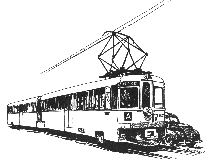A primary goal of the Silicon Valley Bicycle Coalition [then named the Santa Clara Valley Bicycle Association], at its founding in 1971, was to repeal the prohibitions of bicycles on expressways, which were enacted by cities five and six years earlier. It has taken 18 years to achieve this in San Jose, and similar time in other cities.
Although some individual traffic engineers support bicycles, this delay was in no small part a result of strong opposition from traffic engineering departments. With the exception of the Palo Alto traffic engineering department supporting the repeal of bicycle prohibitions on Foothill Expressway in 1976, all the traffic engineering departments opposed bicycles when this matter came before their respective political entity: the City Councils of Los Altos, Sunnyvale, San Jose, Santa Clara and Campbell, and the Santa Clara County Board of Supervisors. Can the traffic engineering departments, or the traffic engineers themselves, be faulted for their opposition?
The opposition of traffic engineering departments contrasts sharply with the support of the County Supervisors and the repeal of the prohibitions by all six city councils. This means there is a strong probability of a common source of the conflicts, or reason for the conflicts. This source of conflict is found in examining the disparity of the mandates or goals of the traffic engineering departments versus those of the city councils.
The goals of the traffic and highway engineering departments (among others not relevant to the discussion) are:
Goal #1: Minimize automobile travel timeGoal #2: Maximize road capacity in automobiles per hour
The broader concept of maximizing transportation efficiency (including transit and bicycles), and the even broader concept of considering the urban environment, is simply not in their mandate.
By opposing bicycles on expressways, goal #1 at first glance seems to be achieved. But a bicyclist riding on the shoulder is not going to slow any car, except for the negligible effect of a car wanting to make a right turn just when the bicyclist is in that intersection area, resulting in the car braking a little sooner. During rush hour, people are slowed down by having other people's cars in front of them, not by bicycles riding on shoulders. People choosing to bicycle on shoulders actually reduce traffic congestion, since most would otherwise take a car.
Traffic engineers' main opposition to bicycles on Lawrence has nothing at all to do with Lawrence being an expressway. They wanted to increase the number of automobile lanes and simultaneously eliminate the shoulders. The shoulders met the criteria for a bike lane. For a small additional cost, they could have both added automobile lanes and keep the shoulders by adding 2 feet of asphalt on both sides of the road (to the changes they planned to do anyway). By not doing this, traffic engineers can achieve goal #2 slightly more easily. According the their goals, they were justified in opposing bicycles until the County Supervisors voted in 1988 to support bicycles even with the slightly increased costs. The County engineers' continued opposition was not justified after the County Supervisors' vote to support bicycles on expressways.
However, the traffic engineers' opposition to bicycles in the 1980s was not the reason bicycling was prohibited starting in 1965. The expressways were intended to be 65 mph freeways. In 1961, a $70,000,000 bond measure that paid for expressways passed but was not enough to build the freeway interchanges, nor to acquire much of the right of access which is a requirement for freeways. Ed Stefani, Principle Engineer at that time for the County, states that instead of freeways, they became "glorified streets". Yet, bicycles continued to be prohibited from the expressways even though the reason for the prohibitions (change to "freeways") was no longer applicable.
While all bicycle prohibitions have been repealed since 1991, and many pedestrian prohibitions since then, the struggle continues for repeal of more pedestrian prohibitions.
The root of the conflict to remove prohibitions is much more encompassing than an issue regarding bicycling. The goals of the traffic engineers have also put them in conflict with transit patrons. Tragic historical events in the East Bay, and recent examples in Santa Clara County, serve to illustrate the point in the next pages.
 Transit
systems and transit patrons have historically competed with
automobile interests and traffic engineers. As competitors, the
conflict continues today. The root cause of this conflict is the same
for bicyclists versus traffic engineers.
Transit
systems and transit patrons have historically competed with
automobile interests and traffic engineers. As competitors, the
conflict continues today. The root cause of this conflict is the same
for bicyclists versus traffic engineers.